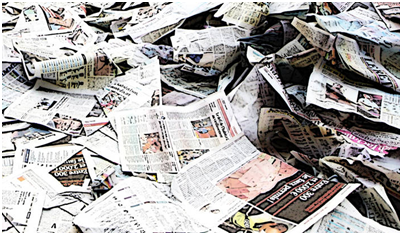Print Media
The BSSRO Print Media
The print media is composed of newspapers, community newsletters, wire services, magazines, and other publications. Within these publications, there are two main divisions of labor: reporting and editing. Reporters are the newspaper writers who investigate newsworthy events and interesting stories. Editors assign stories to reporters, edit story content, and decide which stories to print.
Why is the Print Media Important?
The print media is an effective way to alert the public to the Weatherization Assistance Program and its work. Readers often bypass paid advertising, but a story from an independent journalist increases public awareness and builds local credibility. The media reaches a broad audience of readers on a daily basis. Reporters and editors are always looking for interesting, newsworthy stories. Attracting media attention can help expand your influence and name recognition in target communities.
How do I Alert the Media to a Weatherization Story?
Reporters sometimes independently cover Weatherization stories, but you’ll increase your chances of coverage if you contact the newsdesk in advance. Tell them what the story is about and why it is newsworthy. There are four excellent ways of alerting journalists to Weatherization stories and events:
- Submit a press advisory in advance via email, fax, or hand-delivery. Following the event, submit a press release with a summary of the event. Note if photos or video footage are available.
- Pursue a professional relationship with reporters and editors. Network at community functions, invite them to lunch, or find other ways of meeting and speaking with members of news organizations, i.e. school board meetings, golf tournaments, basketball games, etc. If reporters know you personally, they are more likely to consider your story suggestions seriously.

- Call a news organization's story tip line. Most newspapers have informal, toll-free hotlines that record story ideas, which are then passed on to reporters. You can find the number in the newspaper or on the Web site. Also, many newspapers have special e-mail addresses specifically for story suggestions.
- Write the reporter a letter. Introduce yourself and your organization and explain your story idea. This is a low-pressure method that is useful for attracting press attention to feature stories that are not time-sensitive. Press letters tend to focus less on generating immediate coverage and more on educating reporters
Print media are lightweight, portable, disposable publications printed on paper and circulated as physical copies in forms we call books, newspapers, magazines and newsletters.
They hold informative and entertaining content that is of general or special interest. They are published either once or daily, weekly, biweekly, monthly, bimonthly or quarterly.
Their competitors include electronic, broadcast and Internet media. Today, many books, newspapers, magazines and newsletters publish digital electronic editions on the Internet.
- Books are the oldest medium of mass communication.
- They are collections of printed pages bound together.
- Their content can be information and/or entertainment.
- Preparation and production of a book can take many months.
- According to Google, there may be 130 million books in circulation.
- Newspapers are collections of printed pages folded together.
- Their content is mostly public affairs and events information reporting with some entertainment.
- Preparation and production of a newspaper can take hours.
- Tens of thousands of individual newspapers are published.
- Magazines are collections of printed pages bound together.
- Their content includes both information and entertainment.
- Preparation and production of a magazine can take many weeks.
- There are some 20,000 different magazines.
- Newsletters are regular publications of only a few folded pages.
- Generally, they address one main topic and are informative or entertaining.
- Newsletters provide information to members, customers, employees and friends of organizations.
- Preparation and production of a newsletter may require only a few hours.
- There are hundreds of thousands of newsletters.
- News media are the elements of mass media that bring us reports of current events and current affairs information.
- They include print media such as newspapers and magazines, and electronic and broadcast media such as radio and television, websites, blogs, wikis, Facebook pages, Twitter tweets, and online representations of traditional news media.
- Newspapers began as journals, so the industry profession came to be called journalism.
- Journalists intend to inform their target audiences about events, issues and trends.
- The field includes professional specialties such as photojournalism, science journalism, magazine journalism, broadcast journalism, editing, producing and others.